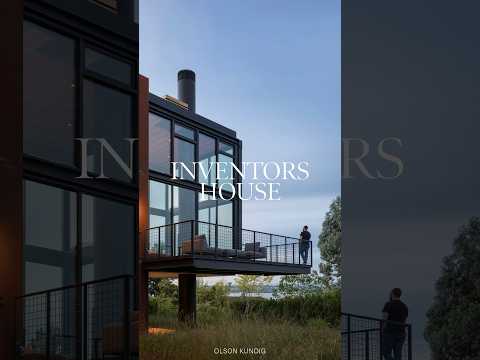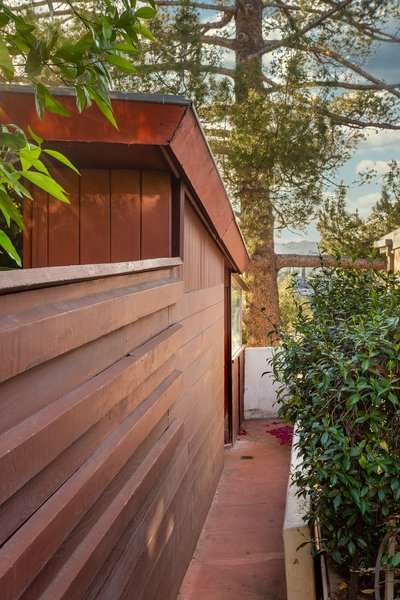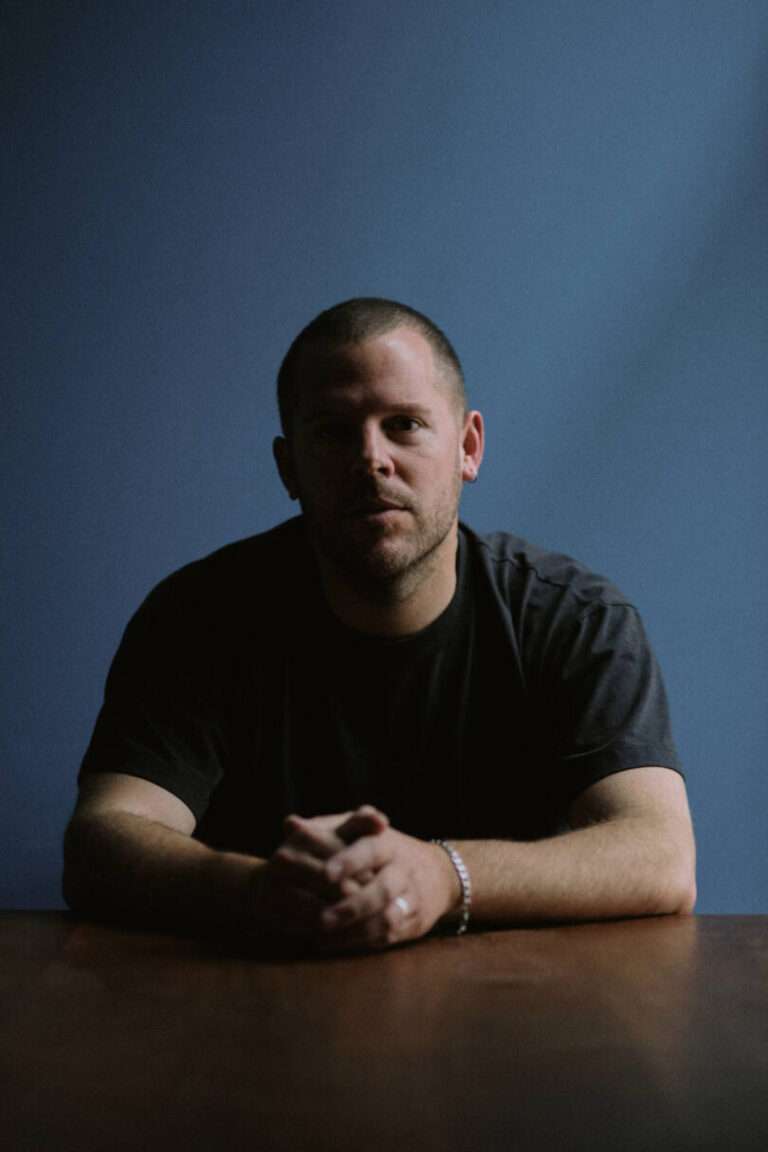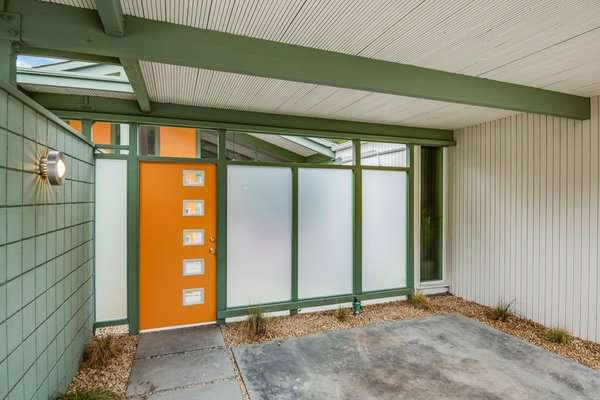Photo: Eugene Kim / My Modern Met
Mexican painter Frida Kahlo is known for her soulful self-portraits, depicting her passions, struggles, and dreams in bright colors. But it’s also easy to lose sight of the human behind the artist—a woman full of curiosity, a lifelong art lover, a disabled creator, and even a beloved host and member of her community. Mexico City’s Frida Kahlo Museum spotlights all these facets, showing how Kahlo’s environment shaped her and, in turn, saw the artist turn this charming abode into a window to her heart.
The Frida Kahlo Museum, known to locals as “La Casa Azul” (The Blue House) does not hold the largest collection of Frida Kahlo paintings—that honor belongs to the Dolores Olmedo Museum, located in the Xochimilco neighborhood of Mexico City—but it is located in the house where Kahlo was born, lived for most of her life, worked, and died. Following her passing in 1954, it was turned into a museum by her husband, Diego Rivera, and it opened its doors to the public in 1958.
The museum throughly chronicles the artist’s life through Kahlo’s possessions and some of her artworks. Visitors can see the art tools Kahlo used throughout her life, from her first colored pencils that date back to her childhood years to her custom easel, which allowed her to paint from her wheelchair. There are plenty of insightful photographs too—a tradition established by Kahlo’s father Guillermo, a talented photographer.
The Frida Kahlo Museum is also home to the artist’s personal art collection, as well as her heaps of beloved trinkets, which are a testament to her ability to be sincerely delighted by any object, regardless of its origin. The museum doesn’t shy away from addressing the artist’s medical issues either. Kahlo’s bandages and medications are exhibited alongside household objects that reflect her daily life, such as a phone book. There are also sobering pieces, such as her last painting, her death mask, and her ashes, placed in a frog-shaped vessel in her dresser.
Among the most exciting pieces are her scribbles, both quick doodles that are not as readily connected to her known œuvre, and personal letters. While all informative texts around the museum are available in both Spanish and English, her letters are not translated. For any follower of Kahlo’s work that understands Spanish, though, they are an enthralling read as these handwritten notes capture the feisty spirit that characterizes her from a young age.
The museum also holds a separate exhibit of Kahlo’s clothes, found in one of the house’s bathrooms in 2004. The collection presents her ornate Tehuana dresses—connecting her mother’s Indigenous ancestry with a time when Kahlo’s illness prompted her to hide her legs—and her bespoke medical corsets, which she decorated and integrated into her outfits. Together, these pieces spotlight how Kahlo came to be known as a unique style icon.
Beyond the elements within the home, the house itself is an architectural marvel that embodies the artistic and social essence of Kahlo. It was built in a colonial style, featuring an expansive garden that entertained and inspired Kahlo, her family, and guests for many years. Airy, sunlit, and with tall ceilings, it’s easy to see why a creative person such as Kahlo felt right at home in this building, leaving her mark for decades to come.
For those interested in visiting the Frida Kahlo Museum, tickets are sold online. And if you plan traveling to Mexico City, we recommend buying your tickets at least a month before your planned visit, as they regularly sell out a few weeks in advance. To learn more, visit the Frida Kahlo Museum’s website.
Mexico City’s Frida Kahlo Museum throughly chronicles the life of the famous artist.
Photo: Eugene Kim / My Modern Met
Known by locals as “La Casa Azul” (The Blue House), the museum is located in the house where Kahlo was born, lived for most of her life, worked, and died.
“Frida and Diego lived in this house 1929-1954.” (Photo: Eugene Kim / My Modern Met)
Visitors can see the art tools Kahlo used throughout her life, from her first colored pencils, to her custom easel, which allowed her to paint from her wheelchair.
Photo: Eugene Kim / My Modern Met
It also spotlights many other facets of Kahlo, who was a woman full of curiosity, a lifelong art lover, a disabled creator, and a beloved host and member of her community.
Photo: Eugene Kim / My Modern Met
Photo: Eugene Kim / My Modern Met
The Frida Kahlo Museum is also home to the artist’s personal art collection…
Photo: Eugene Kim / My Modern Met
…as well as her heaps of beloved trinkets, which highlight how sincerely delighted she was by any object, regardless of its origin.
Photo: Eugene Kim / My Modern Met
The museum also holds a separate exhibit of Kahlo’s clothes, found in one of the house’s bathrooms in 2004.
Photo: Eugene Kim / My Modern Met
Photo: Eugene Kim / My Modern Met
Photo: Eugene Kim / My Modern Met
If you plan to visit the museum, we recommend buying your tickets at least a month in advance, as they regularly sell out.
Photo: Eugene Kim / My Modern Met
Museo Frida Kahlo: Website
My Modern Met visited the Frida Kahlo Museum and received permission from staff to take the pictures featured in this article, as well as the videos shot in the outside garden uploaded to our social media channels.
Related Articles:
10 Interesting Frida Kahlo Facts That May Surprise You
The Stories and Symbolism Behind 10 of Frida Kahlo’s Most Famous Paintings
Book Reveals Hundreds of Frida Kahlo’s Fascinating Personal Photography Collection
How Much Do You Know About Frida Kahlo? [Quiz]





